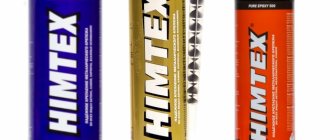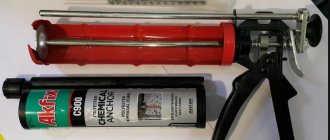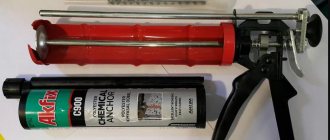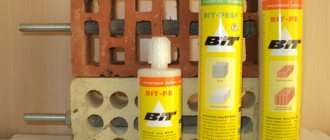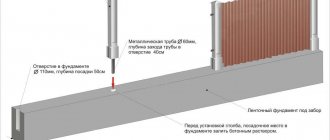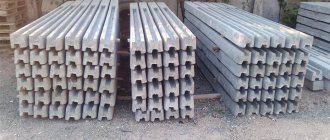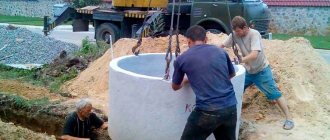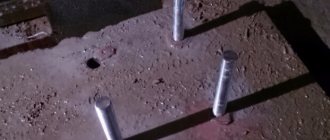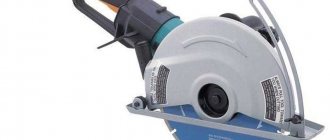is a leader in the production of equipment for construction and repair, as well as related products such as bolts or anchors. How do anchors differ from this manufacturer? What are the advantages and disadvantages of the Hilti anchor? What types of anchor bolts does the company produce and how to install one or another type with your own hands, read on.
Products
Types of anchors and their features
Currently, Hilti produces several types of anchors:
Chemical anchors
A chemical anchor is a special dowel that is equipped with an adhesive composition for fixation in materials such as:
- hollow brick;
- expanded clay concrete;
- shell rock;
- limestone and so on.
Thanks to its features, the attachment to porous substrates is highly durable and extremely reliable. However, replacing such a fastening element, if necessary, will be quite difficult, since the base will have to be somewhat destroyed.
Currently, chemical anchors are produced in two types:
- Chemical capsules (marked HVU). The devices are a container (most often made of polyethylene) of a certain size, inside of which there is a two-component adhesive composition. Upon contact with a metal dowel, the container depressurizes and, under the influence of air, mixes and hardens, thereby fixing the fastening element. The main advantages of this type are the speed and ease of installation. Negative qualities include the relatively high cost and dosage of the adhesive composition, which does not allow achieving strong fixation of the anchor when installed in large-volume voids.
Capsule chemical anchor
- Chemical injections (marked HIT) are two-capacity ampoules, one of which contains the adhesive composition, and the other contains the hardener. Unlike capsules, injection dowels can be produced in different volumes, which facilitates reliable fastening even in voids. Another advantage of this type is the lower cost, justified by the use of glue of a different composition. A significant disadvantage of the injection anchor is the need to purchase (rent) additional equipment for installation.
Injection Type Chemical Anchor
Expansion anchors
Unlike a chemical anchor, an expansion anchor is a more standard fastening element. As the threaded rod is tightened, the spacer part of the anchor increases along its entire length, which allows you to create strong fastenings even for massive structures.
Standard anchor for fastening heavy structures
Depending on the type of base to which additional elements need to be attached, the following types of anchors are distinguished:
- for concrete with cracks – HST/HST3. this type can also be used for installation in areas with seismic activity;
- for solid bases - HSA or HSV (a more budget option, also highly durable);
- for fastening heavy structures - HSL 3 or 3G.
Drive-in anchors
The last type - drive-in anchors are easy to install. Such fasteners are intended for fixing sheathing (plasterboard, wall panels, etc.), insulating materials or light loads (light weight structures).
They can be made:
- made of metal. They are more durable, but at the same time more expensive;
Drive-in anchor made of metal
- made of plastic. Designed for fastening lightweight structures.
Drive-in anchors made of plastic
Application areas for chemical anchors
First, we list for what types of structural connections it is advisable to use a chemical anchor:
- during the construction of high-rise buildings
- when forming the foundation of prefabricated buildings, even under difficult working conditions (humidity)
- during the construction of bridges: suspension, drawbridges, arches
- when fastening heavy concrete beams
- when attaching metal beams to a stone base
- when creating reinforcement outlets during monolithic construction
Most of the listed areas of application of chemical-based fasteners can be safely attributed to responsible construction, that is, the construction of structures that are subsequently operated by a large number of people or are subject to extra loads.
Let's also consider more specific examples where a chemical anchor is a reliable fastening in various areas of modern responsible construction:
- energy industry (nuclear power plants, state district power plants, power line supports, transformers)
- mining industry (monorails, funiculars, ski lifts)
- airports (expansion of runways and taxiways, installation of match and radio antennas and navigation equipment)
- port construction (reconstruction and repair of quay walls, fastening of mooring bollards and bollards, locks, oil terminals)
- industrial equipment (distillation columns, conveyors, machines)
- prefabricated buildings (fastening load-bearing frames to strip foundations)
- industry of water parks, swimming pools and other water facilities
In addition, chemical anchors are used in the construction of temporary structures that require a certain strength, and the like:
- elevators (reconstruction of shafts, fastening of elevator equipment, escalators)
- construction equipment (elevators, scaffolding, cranes)
- warehouse equipment (racks, conveyors, lifts)
- fastening of building structures (columns, consoles, balconies)
Examples of using chemical anchors in repair work:
- strengthening of structures (metal clips, injection of masonry walls)
- strengthening foundations
- restoration of architectural monuments
It is advisable to fix hinged elements that have certain installation requirements to chemical anchors:
- ventilated facades
- road construction (noise barriers, barriers, information boards, lighting masts, speed bumps)
- decorative elements (railings, canopies, lighting, molded decorative elements)
- advertising structures (signs, banners, banners, roof installations)
As you can see, the chemical anchor is universal in application: for fastening solid structures and monolithic, porous materials; when working on structures made of concrete, brick, natural stone.
Installation technology
The installation process of anchors depends on the type of fastening element.
Installation of chemical anchors
Installation of injection anchors, unlike capsule anchors, is carried out with special equipment - a dispenser.
Chemical anchor installation device
In general, the installation diagram looks like this:
- a hole is drilled in the selected location with parameters that fully correspond to the fastening element;
- If possible, dust and other accumulations of dirt are completely removed from the hole (you can use a syringe or other similar devices);
- a capsule is inserted into the hole (installation of capsule anchors) or the hole is filled with an injection anchor using a dispenser;
- the fastening element is inserted to the desired height;
- wait the time (according to the attached instructions) necessary for the adhesive mixture to dry completely.
Chemical anchor installation technology
An overview of chemical anchors and the method of their installation are presented in the video.
Installation of expansion and drive-in anchors
Installation of drive-in and expansion anchors is performed as follows:
- a hole is drilled, the width and depth of which corresponds to the diameter and length, respectively, of the fastening element;
- dust and dirt are removed from the hole (this operation can be neglected, since in this situation it is not significant and is performed only for cleanliness);
- a fastening element is inserted into the prepared hole: the driving anchor is driven into the hole with a hammer, and the spacer anchor is screwed in with a key (screwdriver depending on the type) of the appropriate size.
Hilti chemical capsule anchors
This type of chemical anchor is clearly dosed for the installation of only one fastening element. It is a cylindrical polyethylene container filled with an adhesive composition. The two components of the adhesive mixture are separated by an impenetrable partition. Mixing of the mixture components occurs at the time of installation. Products of this type are marked with the letters HVU, indicating the thread of the anchor pin and the depth of the mounting hole for it. For example, the marking “HVU M16X125” means that this capsule is intended for fastening an anchor rod with an M16 thread, a hole depth in concrete of 125 mm. The line of capsules is presented quite widely: from M8 to M39.
The technology for installing a stud using an adhesive capsule is quite simple:
- We drill a hole of the required diameter and depth in the base. The manufacturer recommends choosing a drill or drill diameter 2 mm larger for studs M8÷M16, and 3÷4 mm larger for M20÷M39. For example, for the “HVU M12X110” capsule you will need a drill with a diameter of 14 mm and a hole depth of 110 mm.
- Carefully clean the hole from dust using air or a brush.
- Insert the capsule into the hole.
- We twist the pin into the hole clockwise: the lower end of the pin breaks the capsule and when screwed in, the components of the adhesive composition are mixed.
The final hardening time of the adhesive composition, after which maximum loads can be applied to the stud, depends on the ambient temperature: from 20 minutes at a temperature of +20˚С to 5 hours at a temperature of -5˚С.
For studs experiencing increased dynamic loads, the company has developed special “HVU-TZ” capsules. The line of these types of capsules is designed to install studs from M10 to M20.
Hilti injection anchor systems
This type of chemical anchor (marked with the letters HIT) is a plastic cartridge with two sealed foil containers (one with adhesive filler, the other with a hardener). Today the company presents 7 varieties of this type of chemical anchor. The price of such anchors depends on the capacity of the cartridge (there are two types: 330 and 500 ml), the components of the composition, the area of application and the load that the stud installed with its use can withstand.
For example, the universal hybrid composition “HIT-MM-Plus” is a budget-class chemical anchor (the cost of one 330 ml cartridge is 650÷900 rubles). The two-component adhesive is made on the basis of urethane methacrylate. Recommended for installation of threaded rods in the range M6÷M16 in basic building materials such as brick (solid and hollow), lime-sand blocks, concrete, blocks made of cellular types of concrete, artificial and natural stone. For fastening studs in hollow blocks and bricks, the company offers specially designed perforated plastic sleeves, which increase the fastening strength and reduce the consumption of adhesive.
And the composition “HIT-RE-500-V3”, which closes the line of injection anchors, already costs 2700–3300 rubles for a package with a capacity of 330 ml and is intended for gluing the releases of working load-bearing reinforcement of floors, columns, foundations and flights of stairs. A composition based on epoxy adhesive with additives that allow the installation of studs and reinforcing bars with a diameter of 10÷55 mm even in holes completely filled with water.
We extrude the glue components using a mechanical hand dispenser. For chemical anchors with a capacity of 330 ml, the dispenser “HDM-330” is intended, for 500 ml - “HDM-500”. We insert the capsules into the plastic cassette of the dispenser (it is included in the kit), screw the mixer onto the threaded part of the cartridge (in which the components of the adhesive composition are mixed) and through its conical tube the glue enters the drilled hole. Parallel pistons are connected to the dispenser handle, and when it is pressed once, one portion of the adhesive composition (about 5 ml) is supplied.
Advantages of the Hilti HIT-RE-100 adhesive anchor
When using HIT-RE-100 adhesive for anchors in concrete, consumers can count on the following advantages of this product:
- Possibility of use indoors and outdoors with the base material, regardless of its current state (dried, moistened, filled with moisture, etc.).
- Large selection of additional accessories (metal brushes, electric dispenser, injection pistons).
- High level of efficiency for use in solid concrete foundations without cracks.
- Long curing period, due to which you can make the necessary adjustments during installation.
- Easy to clean, making installation much easier.
The cost of adhesive for anchors in concrete Hilti HIT-RE-100 starts from 1,500 rubles for a 330 ml container.
Chemical anchor calculation
For reliable and correct installation of the stud, in accordance with the technical regulations, the hole must be ⅔ filled with adhesive (the excess should protrude beyond the edges of the hole only after installing the stud). It is easy to calculate the consumption of chemical anchors for installing one product yourself using the following formula:
V₁ – volume of adhesive required to install one anchor (ml);
π – number “PI” (3.14);
h – hole depth (mm);
D – diameter of the drilled hole (mm).
For example, we use the composition “HIT-MM-Plus” and an M12 hairpin. Recommended by the manufacturer: drill diameter – 14 mm, hole depth for reliable fixation of the stud – 85 mm. We substitute our values into the formula and get:
Since one press on the dispenser handle squeezes out about 5 ml of adhesive, for our example, two presses are enough to install one pin.
Advice! Since the manufacturer recommends replacing the dispenser after using the injection system, it is advisable to drill and clean the required number of holes in advance, and then install all the pins with a chemical adhesive composition.
Chemical anchors from various manufacturers are available on the modern market: Hilti, Himitex, Fischer, Sormat, MKT, Mungo. The choice of one type of anchor or another depends on the base material in which the stud will be installed, and on the planned load on it. Before purchasing, you must carefully read the manufacturer’s instructions, then your choice will be correct both technically and materially.
Chemical anchor VM-PY
Chemical anchor VM-PY
More details
Chemical anchor VM-PY
Chemical anchor VM-PY from the German manufacturer MKT, which includes an adhesive base made of vinyl ester..
More details
Installation of anchor bolts
Installation of anchor bolts and chemical anchors from HILTI Germany and BIT manufactured in England. We offer installation of anchor bolts from other manufacturers. Separately, we can provide a service for diamond drilling of holes for the installation of HILTI driven anchor systems as well as anchor systems and elements of the OMAX brand
You can find out the cost of an adhesive anchor by phone; you must indicate the diameter of the hole or the diameter and length of the pin and call Hilti.
Chemical anchor VM-MA Polar
Chemical anchor VM-MA Polar
More details
Chemical anchor VM-MA Polar
The chemical anchor VM-MA POLAR from the manufacturer MKT is created on the basis of vinylester resin without the use of...
More details
